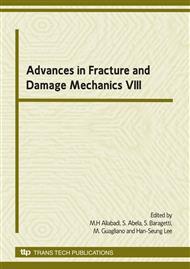p.565
p.569
p.573
p.577
p.581
p.585
p.589
p.593
p.597
Evaluation of Flexural Performance in UHPC(Ultra High Performance Concrete) According to Placement Methods
Abstract:
Apart from its high compressive, tensile and flexural strengths reaching approximately 200MPa, 15MPa and 35MPa, respectively, Ultra High Performance Concrete (UHPC) is characterized by its high resistance against degrading factors that can delay their penetration and diffusion speeds down to 1/20 to maximum 1/10,000 compared to ordinary concrete. UHPC also exhibits self-compaction properties with a slump flow of about 220mm. Furthermore, the most remarkable feature of UHPC is the improvement of its flexural strength and toughness through the admixing of steel fiber. Accordingly, this study evaluates the effects of the placement method on the flexural performance of UHPC. As a result, the flexural strength of UHPC appears to be extremely dependent on the placement method with variation of the maximum flexural strength up to 2 to 3 times while poor influence is observed on the initial crack strength.
Info:
Periodical:
Pages:
581-584
Citation:
Online since:
October 2009
Authors:
Keywords:
Price:
Сopyright:
© 2010 Trans Tech Publications Ltd. All Rights Reserved
Share:
Citation:


